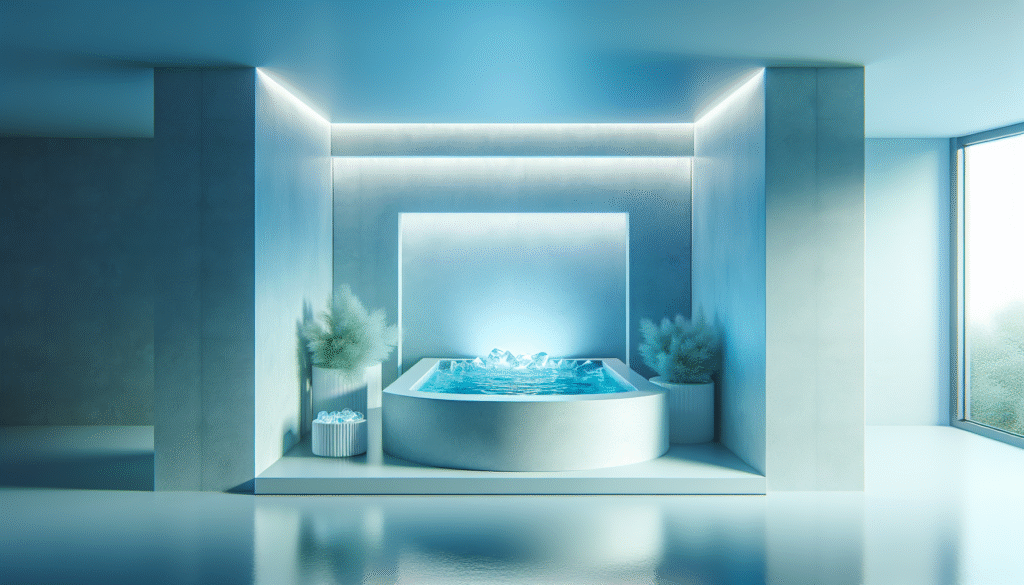What do you really know about the benefits of cold plunges? Have you ever considered not just the physical, but also the neurological effects of immersing yourself in ice-cold water? If you haven’t, let’s break it down together, looking at what recent MRI and EEG studies reveal about The science behind this chilling practice.
The Cold Plunge Phenomenon
Cold plunges have surged in popularity, turning from a niche practice to something you might hear about in wellness circles and on social media. But what lies behind the appeal? It seems these icy baths promise everything from improved recovery and enhanced mood to heightened alertness. So, is there any meat to these claims, or is it just chilly hype?
Let’s look at the essence of cold plunges: immersing yourself in cold water, often at temperatures below 60 degrees Fahrenheit, for a short period. While it might send shivers down your spine, your body goes through a fascinating series of reactions that can impact both your body and mind.

Understanding Cold Exposure
Why do people take the plunge? Understanding the basic science of cold exposure is crucial for dissecting the results of various studies. When you expose your body to cold water, a few key physiological responses occur:
-
Vasoconstriction: Your blood vessels narrow, which helps conserve heat and maintain your core temperature.
-
Revved-Up Metabolism: The body works harder to generate heat, leading to increased calorie burning.
-
Endorphin Release: The shock of cold can stimulate the release of endorphins, often referred to as the body’s natural painkillers, giving you a euphoric feeling post-plunge.
Understanding these basics sets the stage for exploring what the scientific studies say—since they provide a more in-depth view of how these processes manifest neurologically.

The Neuroscience Behind Cold Plunges
What does the brain have to do with cold water? A lot, actually! When you step into a cold plunge, your central nervous system reacts. MRI and EEG studies have shown that cold exposure affects brain activity in various ways, which we’ll explore below.
MRI Studies: Visualizing Brain Activity
Magnetic resonance imaging (MRI) allows scientists to visualize brain sections and monitor changes in brain activity during different stimuli, including cold exposure. When researchers used MRI to study the effects of cold plunges, they observed several patterns:
-
Increased Activation in Dopaminergic Pathways:
- Cold exposure has been associated with heightened activity in the brain’s reward pathways, particularly those related to dopamine release. This could explain the often euphoric feelings people report after a cold plunge.
-
Enhanced Functional Connectivity:
- Areas of the brain responsible for emotional regulation and stress response showed increased connectivity. This suggests that regular exposure to cold might improve your body’s ability to cope with stress and anxiety.
-
Increased Brain Volume Over Time:
- Some studies indicate that repeated exposure to cold might lead to structural changes in the brain, such as increased gray matter volume in regions linked to emotional regulation.
EEG Studies: Measuring Brain Waves
While MRI studies provide visual insights, electroencephalography (EEG) offers a different perspective by measuring electrical activity in the brain. This method can tell us about the brain’s state during cold exposure. Here’s what studies have found:
-
Changes in Alpha and Theta Waves:
- EEG studies show an increase in alpha and theta brain wave activity during cold plunges. This might suggest a shift towards a meditative or relaxed state while you’re in the water.
-
Reduction in Beta Waves:
- High levels of beta waves are often associated with active thinking and anxiety. Individuals undergoing cold exposure demonstrated decreased beta wave activity, indicating a potential calming effect on the mind.
-
Potential for Neuroplasticity:
- The changes in brain wave patterns might suggest enhanced neuroplasticity—the brain’s ability to adapt and change. Regular cold plunges could trigger your brain to create new neural connections, which can help improve cognitive flexibility and emotional resilience.

The Psychological Impacts of Cold Plunges
You’ve learned about the physiological and neurological aspects of cold plunges, but what about the psychological impacts?
Stress Resilience
One of the standout benefits that enthusiasts tout is increased stress resilience. Cold plunges activate the hypothalamic-pituitary-adrenal (HPA) axis, which plays a critical role in your stress response. Regular practice can potentially help your body adapt to stressors over time, making the icy experience more bearable.
Mood Enhancement
You might have felt it yourself: stepping into a cold plunge can instantly shift your mood. Research shows that endorphins released during the plunge can elevate your mood, while other studies note that cold exposure can reduce symptoms of depression. In essence, committing to this chilly practice might just be a way to boost your emotional well-being.
Improved Sleep Quality
Many people swear by cold plunges for improving sleep quality. Cold exposure may increase parasympathetic nervous system activity, which helps promote relaxation—courting better sleep. Some studies suggest that immersing yourself in cold water before bed could assist with falling asleep faster and more profoundly.

Cold Plunge Practices: Making It Work for You
While it’s clear that cold plunges offer various potential benefits backed by science, integrating them into your routine can make all the difference. If you’re considering trying a cold plunge or enhancing your training routine with it, here are some practical tips:
Start Slow
If you’re new to cold exposure, it’s crucial to build up gradually. Instead of plunging straight into icy water, start with cooler showers and gradually decrease the temperature or increase the duration of your exposure.
Consistency is Key
For the benefits to be palpable, you might want to embrace a routine. Whether it’s plunging a few times a week or practicing contrast baths (alternating between hot and cold), consistent exposure seems to be a common thread in achieving notable outcomes.
Listen to Your Body
It’s essential to tune in with your feelings. While cold plunges can feel invigorating, they aren’t for everyone. If at any point you feel unsafe or experience adverse reactions, it’s best to stop.
Safety First
Be sure to take safety precautions when diving into cold water. Ideally, always consider having a buddy to prevent potential risks like hypothermia or loss of consciousness.

Conclusion: Is Cold Plunge Right for You?
Given everything we’ve discussed, are you feeling inspired to give cold plunges a shot? While they might sound daunting, the science backing the benefits is fascinating. From enhanced neurological responses observed in MRI and EEG studies to improved mood and stress resilience, there’s a lot to gain.
However, like any wellness trend, it’s important to approach it with an open mind but a realistic perspective. Cold plunges might inspire you to push your limits, but they should be a complement to a balanced and healthy lifestyle, not a replacement.
So as you weigh the prospect of incorporating cold plunges into your routine, consider your personal health, preferences, and readiness. The plunge could lead to surprising benefits, both physically and mentally, but it is ultimately a personal journey that only you can navigate.

